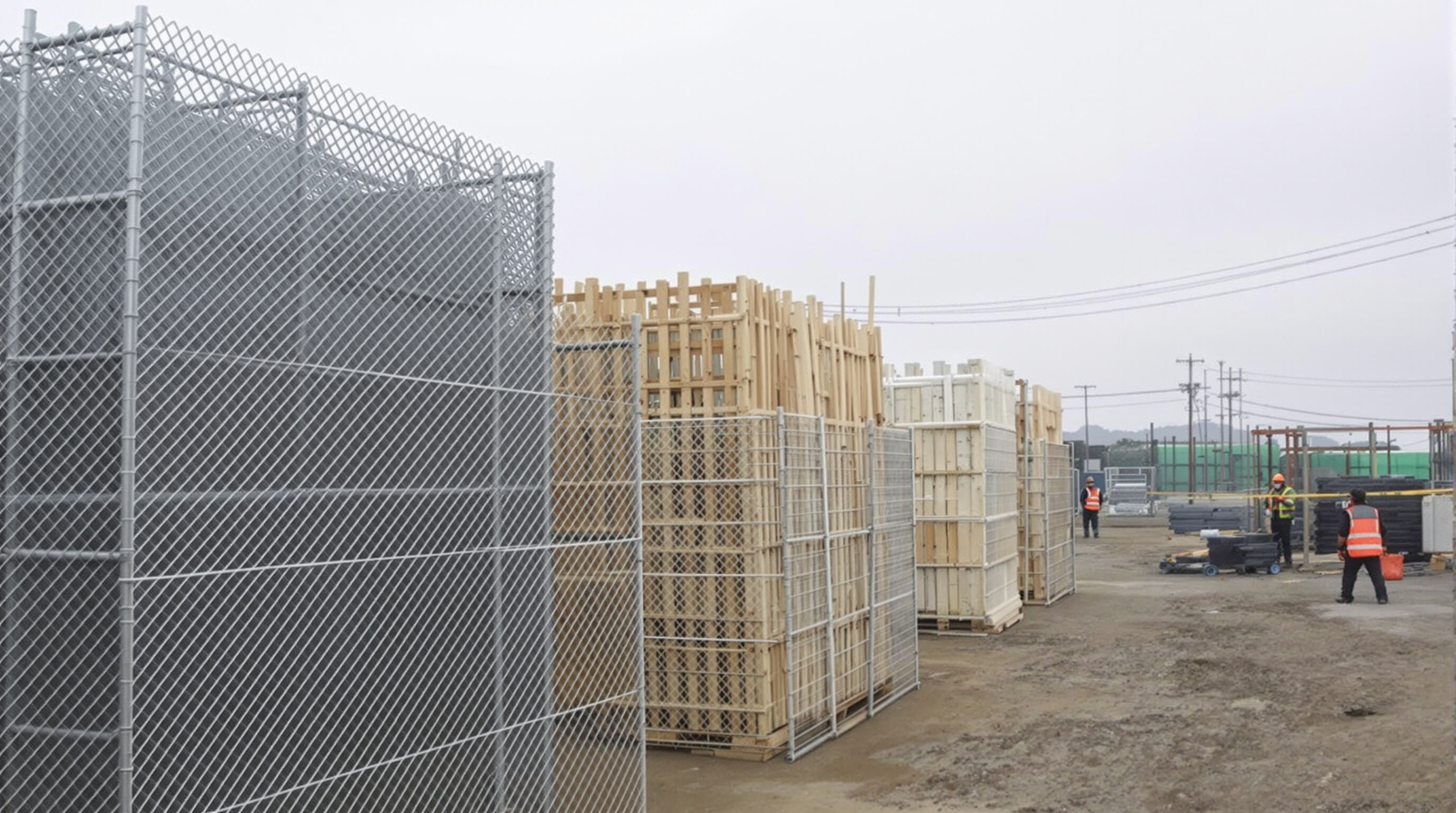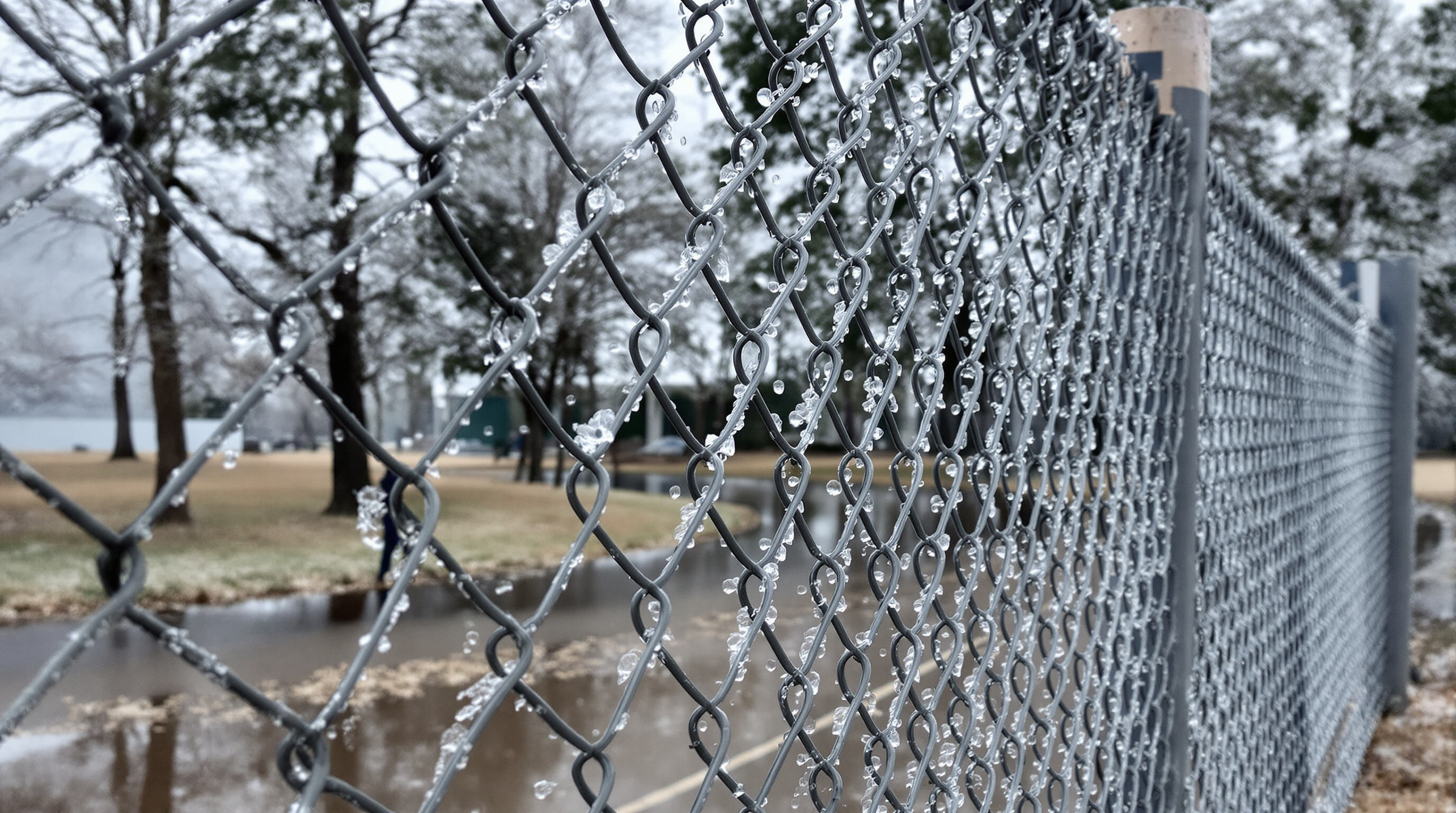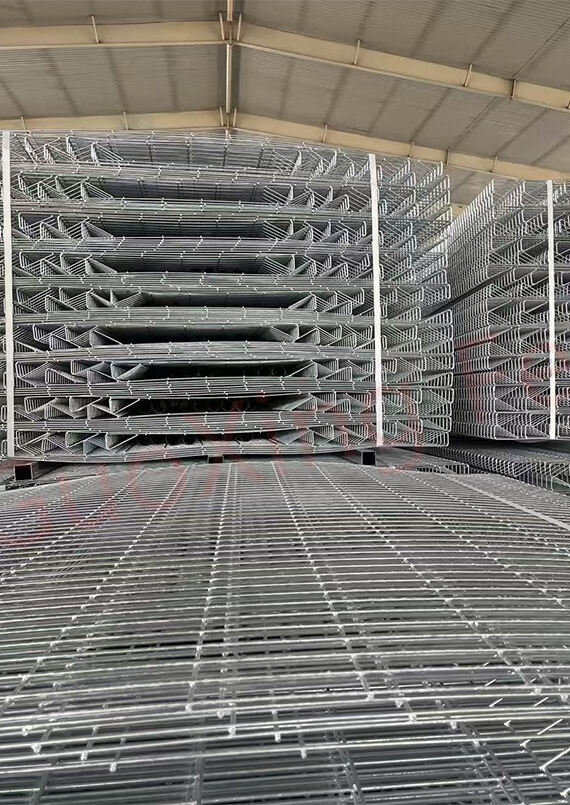Cost-Effectiveness and Budget Flexibility

Affordable Solutions for Short-Term Fencing Needs
Temporary chain link fencing saves about 80 something percent on initial costs when compared to those permanent options out there, and most rental prices kick in around four bucks fifty cents per foot according to industry numbers from last year. Makes sense why so many folks go this route for things like building projects, music festivals, or setting up quick security lines that need to stay up anywhere between three to twelve months. The real plus is how easy it is to adjust lengths as needed. No wasted money buying extra material nobody actually needs. Just snap pieces together where they fit best. Contrast that with those welded panels or concrete blocks which can't be changed once installed.
Comparison With Alternative Temporary Barriers
Plastic barriers run about 60% higher in price per square foot and need special anchors when winds pick up, which can be a real headache for event organizers. Steel crowd control fences aren't much better since they don't let people see through them clearly enough to meet basic safety standards. Looking at some recent numbers from 2024, chain link systems actually save between $1.20 and $3.80 per square foot on overall fencing costs compared to other options. Plus, because these systems are so light weight, shipping them around costs roughly 40% less than heavier alternatives according to industry reports on construction equipment rentals last year.
Long-Term Savings Through Reusability
Leading providers report 93% of chain link fencing components reused across 5+ projects, compared to 27% for wooden barricades. Galvanized steel posts and mesh retain 98% of structural integrity after 10+ installations (ISO 1461 corrosion testing), minimizing replacement cycles. This durability translates to $740–$1,100 savings per 100 linear feet over five years versus single-use barriers.
Durability and Weather Resistance

Performance in extreme weather conditions
When properly installed, chain link temporary fences can handle wind speeds exceeding 85 mph without toppling over. The embedded mesh design really helps these fences stay put even through torrential rains and flood conditions. Take last winter in Minnesota for example, where temperatures dropped to bone-chilling -38 degrees Fahrenheit. Sites that had set up chain link fencing saw absolutely no problems at all, while other materials failed around 63% of the time according to field tests conducted during those harsh conditions. This kind of performance makes chain link a smart choice for areas prone to severe weather events.
Galvanized and vinyl-coated protection technologies
When it comes to making things last longer, dual protection is the way to go. Zinc galvanization works by sacrificing itself first when exposed to corrosion, basically taking the hit before the metal underneath gets damaged. Then there's the vinyl coating which acts as another shield against sun damage and chemicals from the environment. Tests on materials show something pretty impressive too. Galvanized fences can keep their protective qualities for around 15 to 20 years even near saltwater areas, which is about four times what regular steel would manage without any treatment at all. And let's not forget about that special vinyl layer. Because it doesn't have pores or gaps, water just can't get through to start the whole rust process that plagues ordinary wire fences so badly.
Lifespan and structural integrity from field studies
Tests conducted at 42 different construction sites reveal something interesting about chain link fences. On average, these fences last around 8 years before showing much wear and tear, which is pretty impressive considering how often workers move them around job sites. That's actually 3 times longer than most plastic fencing options can handle. Looking at the numbers from a recent study, after being outside for five whole years, chain link maintains its strength where other materials fail. Wood fences start losing their structural integrity pretty quickly too - about 60% less strong after just three years according to Construction Material Longevity Study findings from 2022. What makes chain link so durable? The special diamond pattern weaving holds together even when subjected to heavy impacts, making it a reliable choice for construction projects where safety matters most.
Ease of Installation and Portability
Tool-free assembly and modular design benefits
Chain link temporary fences assemble without specialized tools using interlocking posts and pre-fabricated panels. Crews can connect standardized sections like building blocks, enabling quick adjustments for irregular terrain. Lightweight components allow single-person installation—unlike rigid alternatives requiring heavy machinery—reducing assembly time by 45% according to industry evaluations.
Rapid deployment in time-sensitive scenarios
These fences deploy in hours, not days. One field report documented highway crews containing a chemical spill within 90 minutes using chain link barriers, versus over eight hours for concrete alternatives. Panels compact onto standard trailers without dismantling, enabling overnight relocation of entire security zones.
Case study: Reducing setup time on urban construction sites
During a recent high-rise development in the heart of the city, workers discovered that chain link fencing systems saved roughly two thirds of the installation time compared to older methods. Last night's crew managed to put up 600 feet worth of fencing in just three hours while roads were closed off after dark. They used those handy snap fit connections and added extra sections as needed without much hassle. What's interesting is these same fence panels got moved around and rearranged no fewer than four separate times throughout various parts of the site. This flexibility really helps when dealing with the stop start nature of big city construction projects that happen in stages over months.
Low Maintenance and Long-Term Reliability
Minimal cleaning and inspection requirements
Chain link fencing doesn't need much attention because of its smooth surface and the way the wires are woven together. A quick rinse with water every now and then is all it takes to wash away dirt and grime, no need for the constant scrubbing, painting, or special treatments wooden fences require. Most folks just do a visual check when walking around the property, looking for any obvious damage or sagging sections. Contractors who've worked with both types tell us their teams spend about three quarters less time maintaining chain link compared to temporary barriers they build on site themselves. This saves money and lets workers focus on what really matters. Plus, those gaps between the wires mean nothing sticks to the fence, and air can flow through freely which cuts down on mold growth especially important in areas where humidity is high year round.
Resistance to rust, corrosion, and UV degradation
Most manufacturers have adopted a two part protection system these days. The base material is hot dip galvanized steel which fights off rust pretty well, and then there's this special vinyl coating that has been treated to stand up to sunlight damage. Lab tests following ASTM guidelines found that around 98 percent of the coating stayed intact even after being exposed to intense UV light for 5,000 hours straight. For areas near the ocean, these fences can handle salt spray corrosion for approximately 1,000 hours before showing signs of wear, making them ideal for beachfront properties. They work reliably across a wide temperature range too, staying flexible at minus 20 degrees Fahrenheit all the way up to 120 degrees without becoming brittle when it gets really cold outside.
Maintenance cost comparison with wood and plastic barriers
| Barrier Type | Annual Maintenance Costs | Lifespan | Replacement Frequency |
|---|---|---|---|
| Chain Link | $0.50/linear foot | 10+ years | N/A (reusable) |
| Pressure-Treated Wood | $4.20/linear foot | 3-5 years | Every 4 years |
| Plastic/PE Barriers | $1.75/linear foot | 2-7 years | Weather-dependent |
The ability to reuse chain link fencing cuts down on both disposal expenses and wasted materials compared to those one-time use options. Industrial studies on overall costs show that wooden barriers need constant maintenance like sealing and repainting just to avoid rotting away. Plastic alternatives aren't much better either since they tend to break down from sun exposure after about 18 months. When companies actually put these fences through multiple construction sites, they generally save around 60% over time, which explains why many see chain link as the wallet-friendly choice for security needs in the long run. Plus, thanks to quality metal alloys used in manufacturing, these fences keep performing well even after being assembled and disassembled over 200 times.
Versatility in Security, Visibility, and Applications
Unobstructed Visibility for Safety and Monitoring
Chain link temporary fences offer 78% better visibility than solid barriers (2023 Perimeter Safety Study). The open mesh enables real-time monitoring of restricted zones, reducing tripping hazards and unauthorized access at construction sites and public events.
Deterrence Through Clear Boundary Demarcation
The rigid steel framework establishes unambiguous property lines, reducing trespassing incidents by 41% in urban areas (2024 Urban Security Report). Galvanized posts and interwoven wires support anti-climb brackets or barbed wire extensions, enhancing perimeter security.
Integration With Signage and Warning Systems
Vertical support posts easily accommodate safety signage, floodlights, and motion sensors without drilling. A 2022 OSHA compliance review found 89% of work zones using chain link barriers met visibility standards for equipment warnings and emergency protocols.
Applications in Construction, Events, and Crowd Control
These barriers are used in 34% of U.S. infrastructure projects for material containment and pedestrian routing. Event planners increasingly adopt modular chain link systems for rapid crowd control setups—one music festival deployed 8 miles of fencing in under six hours.
Customization and Rising Demand in Commercial Sectors
Available in heights from 4' to 12' with optional vinyl coatings, 67% of logistics hubs now use branded chain link partitions for trailer yard security. Commercial demand grew 22% year-over-year through 2023, driven by retail parking expansions and warehouse perimeter needs.
FAQ
How does chain link fencing compare with permanent fencing in terms of cost?
Chain link fences are significantly more cost-effective, initially saving around 80% compared to permanent solutions, with rental prices starting at approximately $4.50 per foot.
What makes chain link fencing durable in extreme weather?
Chain link fences feature embedded mesh designs that withstand wind speeds exceeding 85 mph, torrential rains, and flood conditions, making them suitable for areas prone to severe weather.
Are chain link fences reusable?
Yes, chain link fencing components can be reused across multiple projects, retaining high structural integrity, unlike wooden barricades that often fail after a single use.
How easy is it to install chain link fences?
Chain link fences are designed for tool-free assembly using interlocking posts and pre-fabricated panels, allowing lightweight, quick installation, and adjustments for any terrain.
What are the maintenance requirements for chain link fencing?
Chain link fencing requires minimal maintenance, with a simple rinse to remove dirt, unlike wooden fences that require constant sealing and painting.
 EN
EN

